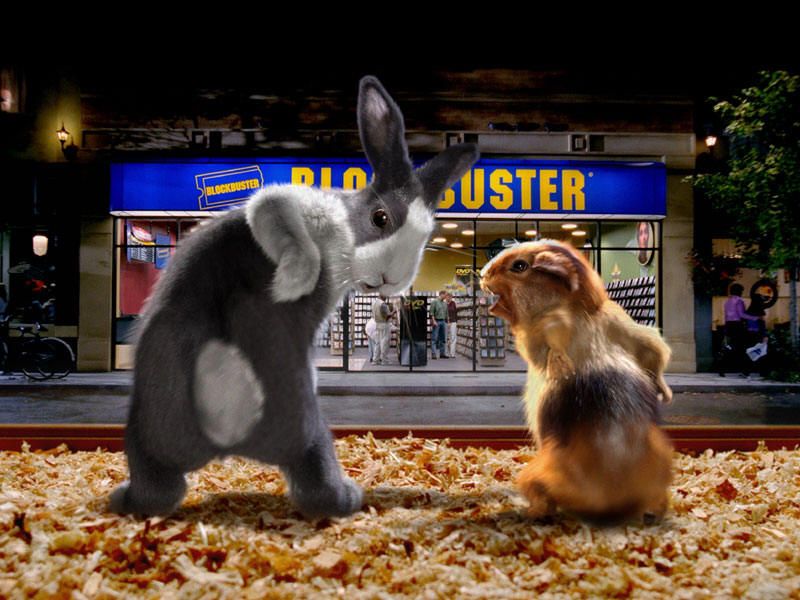When I was at the Animal Rights 2007 Conference in Los Angeles this past weekend, I picked up a terrifying article on rabbits from Animal Place http://www.animalplace.org/ located in Vacaville, CA and I read an article about rabbits in "Compassionate Living" which is published by Mercy For Animals http://www.mercyforanimals.org/ Here are some excerpts from the articles I read:
The Hidden Market
Twenty million rabbits are bred each year for their fur, meat, or as research tools. Although the rabbit-raising business is small compared with other farmed animals, the industry is rapidly developing.
Breeding At All Costs
To maximize production, breeders use unnatural methods such as artificial insemination and surrogate mothering. The hapless rabbits are thrown into remorseless breeding schedules and are forced to reproduce at five times their normal rate.
Cruel Confinement
Young bunnies are prematurely weaned and forced to spend the rest of their lives confined to small wire battery cages where they are prevented from running, playing or exhibiting nearly all their natural behaviors. Such confinement can cause a host of health problems, yet sick rabbits are routinely denied veterinary care. Investigators have found rabbits living in overstocked, unsanitary conditions. At seven weeks of age, the young rabbits are killed and sold as "fryers."
Health Hazards
Rabbit meat is higher in cholesterol than other meats and is also high in ammonia, a chemical believed to impair human kidney function. Even more critical is the fact that rabbit meat is not currently subject to USDA inspection. Therefore, raisers are free to administer whatever drugs they choose, at whatever quantity.
Beyond the Meat Industry
Rabbits are also commercially bred for their fur. Furriers kill rabbits for their coats at 5 - 8 months of age. To prevent any damage to the pelt, the rabbits are either gassed, electrocuted, or clubbed in the head and then decapitated often while fully conscious.
The largest and most profitable area of rabbit exploitation is research. Hundreds of thousands of rabbits are bred annually for use in drug and cosmetic testing, and biomedical research. Rabbits used for research live in laboratories where they are confined in small cages and subjected to painful, invasive procedures. Once they are served their "purpose," they are readily disposed of.
The Hidden Market
Twenty million rabbits are bred each year for their fur, meat, or as research tools. Although the rabbit-raising business is small compared with other farmed animals, the industry is rapidly developing.
Breeding At All Costs
To maximize production, breeders use unnatural methods such as artificial insemination and surrogate mothering. The hapless rabbits are thrown into remorseless breeding schedules and are forced to reproduce at five times their normal rate.
Cruel Confinement
Young bunnies are prematurely weaned and forced to spend the rest of their lives confined to small wire battery cages where they are prevented from running, playing or exhibiting nearly all their natural behaviors. Such confinement can cause a host of health problems, yet sick rabbits are routinely denied veterinary care. Investigators have found rabbits living in overstocked, unsanitary conditions. At seven weeks of age, the young rabbits are killed and sold as "fryers."
Health Hazards
Rabbit meat is higher in cholesterol than other meats and is also high in ammonia, a chemical believed to impair human kidney function. Even more critical is the fact that rabbit meat is not currently subject to USDA inspection. Therefore, raisers are free to administer whatever drugs they choose, at whatever quantity.
Beyond the Meat Industry
Rabbits are also commercially bred for their fur. Furriers kill rabbits for their coats at 5 - 8 months of age. To prevent any damage to the pelt, the rabbits are either gassed, electrocuted, or clubbed in the head and then decapitated often while fully conscious.
The largest and most profitable area of rabbit exploitation is research. Hundreds of thousands of rabbits are bred annually for use in drug and cosmetic testing, and biomedical research. Rabbits used for research live in laboratories where they are confined in small cages and subjected to painful, invasive procedures. Once they are served their "purpose," they are readily disposed of.
What You Can Do
- Don't patronize restaurants that serve rabbit; better yet, ask them to stop.
- Refuse to eat rabbit meat and encourage those around you to do likewise.
- Never wear furs or fur trimmed garments and respectfully express your concern to those who do.
- Only buy cruelty free items from companies that do not test on animals. You can obtain a list of such companies from People for the Ethical Treatment of Animals at http://www.peta-online.org/
- Ask the USDA to protect rabbits under the Humane Slaughter Act by contacting Secretary Mike Johanns, USDA, 1400 Independence Ave., S.W., Room 200-A, Washington, DC 20250
- Visit RabbitProduction.com and watch the film "Rabbits: Pets or Poultry?"
Sources: Animal Place, 3448 Laguna Creek Trail, Vacaville, CA 95688 http://www.animalplace.org/ and Mercy for Animals http://www.mercyforanimals.org/
Wow, my rabbit, Radar, is so lucky! Since he's 99.9% litter-box trained, we let him roam around our living room, entry way, hallway, and my son's bedroom which serves as his dining room/bathroom. I wish I could let him roam around our entire house, but unfortunately, our cat, Sally, views him as prey and it's too difficult to rabbit-proof the other rooms in our house with all the wires we have. Nevertheless, compared to most rabbits who are confined to small cages, Radar lives the life of a prince!




No comments:
Post a Comment